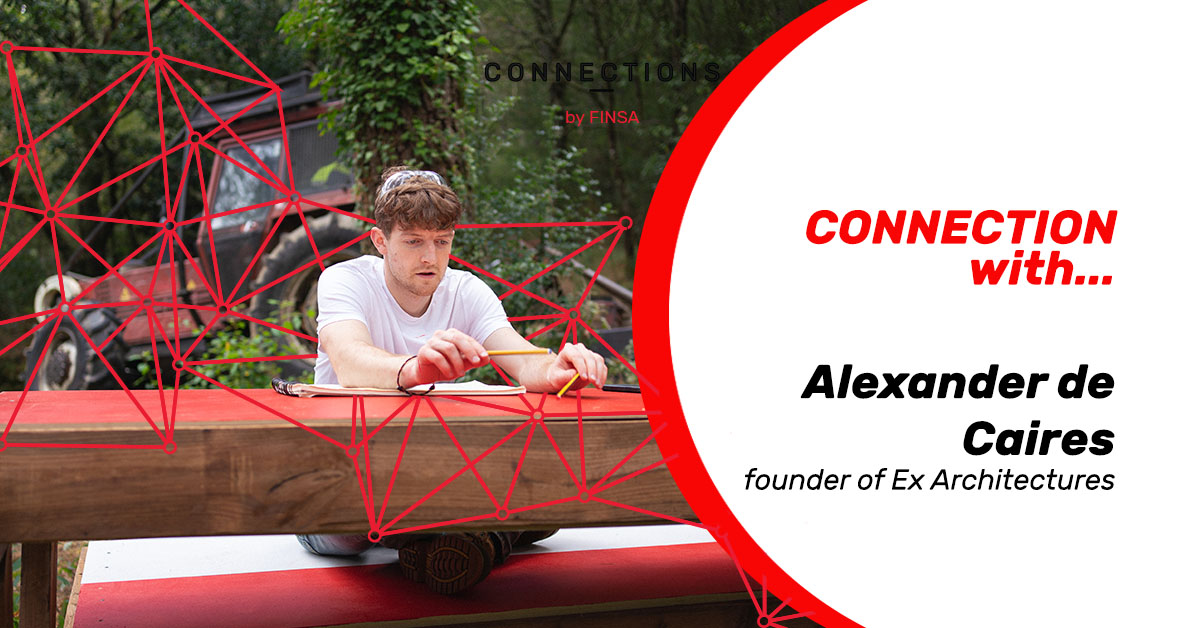The outdoors is more important than ever. The pandemic and the explosion of teleworking have changed the perception of outdoor spaces, which are evolving and adopting new uses. Patios, terraces and gardens are no longer secondary areas, but multi-purpose rooms with their own personality. The inside-outside boundaries continue to blur and the sustainability factor of furniture is once again a key factor in the design of the pieces.
Ver esta publicación en Instagram
Of all the trends in outdoor furniture for 2023, we highlight these five:
Ver esta publicación en Instagram
#1: Inside out
The concept of the fusion of indoors and outdoors continues to reshape the codes of outdoor living. The indoors goes out and the outdoors comes in. The line that traditionally separated the two is becoming increasingly blurred and the two are becoming seamlessly integrated. “There is a clear tendency to blur the boundaries and for everything to relate much more: the office with the hotel, the hotel with the house, the interiors with the exteriors…”, says Eva Prego, co-founder of Stone Designs, a multidisciplinary studio in Madrid that develops interior design and product projects.
How are manufacturing companies adapting to these trends? “They try to ensure that the solutions they bring to the market can be used both indoors and outdoors, although in this case the conditions are much more demanding: they have to withstand the effects of sun, rain and wind, and also take into account whether they are in a public space or in a controlled outdoor environment”.
It is quite possible, therefore, that the most comfortable, pleasant and cosy place is no longer inside, but precisely outside. This is the case in offices, hotels and restaurants. “It is becoming increasingly common for elements of the residential sector to merge into the work environment, or for us to find work scenes within hotel spaces, and vice versa. It is true that each space has its own specific requirements, but they are no longer exclusive but increasingly transversal,” says Javier Blanco, CEO of Espacio Aretha, an architecture, planning and interior design studio.
Ver esta publicación en Instagram
Of course, that boundary is also blurred in the residential sphere. Terraces, patios and gardens are rediscovered as the heart of the home, transformed into lounges in which to relax, entertain and enjoy meals and gatherings. “The pandemic accelerated this. It was interesting to see how northern European countries were making use of the outdoors, even though their conditions are worse than ours. Now, however, there is a clear trend here to use the outdoors all year round. There are many resources to make a terrace cosy in winter,” explains Eva Prego.
Ver esta publicación en Instagram
Ver esta publicación en Instagram
At the same time, we are also seeing a wider range of outdoor equipment on offer. Enclosures, panels, windbreaks and pergolas are being installed to help us connect with nature and protect us from the elements.
Ver esta publicación en Instagram
Heating systems and custom-built or portable covered kitchens are installed to make the most of the outdoor space. The typical brick-built barbecue is left behind and gives way to a complete outdoor cooking space, complete with sink, fridge and food preparation areas:
Ver esta publicación en Instagram
Ver esta publicación en Instagram
#2: Nature at the centre
Sustainability is no longer a fad or a rising value. It is a maxim. “Today it should not even be mentioned as a differentiating factor, but should be taken for granted. In fact, if you don’t work on it, you’re out”, explains Javier Blanco.
One of the fundamental premises is that gardens and terraces prioritise the health of the planet. For Blanco, “there is a widespread awareness of eco-design, noble materials and forms and concepts that bring us back to nature, and this awareness is becoming more and more sincere, growing exponentially”.
This translates into environmentally friendly outdoor furniture, responsibly manufactured. Durable and resistant pieces, yes, but made with natural materials, locally produced to reduce CO2 emissions generated by transport and contribute to the development of the economy in the environment. Prego is clear: “The material we choose must be recyclable, we must study its traceability, taking into account its environmental impact”. Wood maintains its presence and importance here, and rattan, wicker and jute are increasingly used to create an environment that breathes nature.
Ver esta publicación en Instagram
In addition to these biomaterials, outdoor products are made from recycled products, based on the concept of circularity and reuse. This includes the range of outdoor furniture designed by Local Works Studio for Maggie’s, a cancer care and support centre in Southampton (UK): the tables and benches are made from terracotta blocks left over from the construction of the façade and gravel from the garden paths; the chairs are made from old hoses from a nearby fire station.
Ver esta publicación en Instagram
Also on trend is this outdoor armchair from the Italian company Nardi, made of fibreglass-reinforced polypropylene, 100% recyclable, with a sinuous profile that evokes a wave. It won the Good Design Award 2022:
Ver esta publicación en Instagram
“I think we are in a moment of a change of trend in which we have moved from the search for the cheapest product to a new understanding of the value of things,” says Blanco.
#3: Modular design: piece by piece
Modular furniture also reigns supreme outdoors due, above all, to its versatility, ease of use and customisation possibilities. “The aim is to favour flexibility to allow spaces to be reconfigured according to the requirements of each moment”, explains Blanco.
Ver esta publicación en Instagram
Ver esta publicación en Instagram
Modularity is also key for Stone Designs. “We advocate working on families that can respond to different needs, so that with one system you can have a seating area, create divisions of spaces, make room for nature, have a support surface….”, says Eva Prego. It is interesting that people can intervene in the design by making the composition that best suits them“.
It is precisely in her studio that Orixe was born, a modular outdoor furniture system designed for Savia, a Finsa brand. “It has many options to help respond to all kinds of situations. And it is sustainable, made from heat-treated wood, iron or stainless steel and concrete with a high percentage of recycled material. A piece with character, but easy to live with”, sums up Eva Prego.
#4: Hold on, there’s a curve (line) coming
The curved shapes found in nature seem to be a source of inspiration for designers. Gone are the days of outdoor furniture with a square box aesthetic, full of edges. The style remains restrained, but the pieces are now expressed through soft, rounded lines. Each piece of furniture is designed to make patios, terraces and gardens cosy, comfortable and pleasant, to give them an enveloping atmosphere. When it comes to creating projects, the furniture loses its angularity and more organic shapes triumph, capable of reflecting comfort, sophistication and elegance at the same time.
Ver esta publicación en Instagram
Ver esta publicación en Instagram
#5: Welcome magenta and terracota
The colour palette is expanding and gaining in character, brightness and diversity. The serene, neutral tones are maintained, but there is no longer any fear of experimenting and there is a firm commitment to more vibrant and daring finishes, with blues in the garden sofas, and pinks and even yellows in the patio chairs. “Colour has to have a coherence and be part of the expression of the piece,” says Eva Prego.
Two shades of colour that are set to triumph in 2023. On the one hand, “Viva Magenta”, considered the exterior colour of the year, an energetic crimson red that Pantone defines as “an unconventional tone for an unconventional historical moment: a new vision”.
Ver esta publicación en Instagram
Ver esta publicación en Instagram
On the other hand, the colour terracotta, that reddish brown, warm, deep and intense, reminiscent of the earth and, therefore, of nature, generates cosy atmospheres and has become an essential for outdoor spaces. “Regardless of fashions, which always contaminate everything, every scene, every environment, has its own colour palette”, recalls Javier Blanco.
Ver esta publicación en Instagram
Ver esta publicación en Instagram
What is your favourite trend for outdoor furniture? Tell us about it on social media using the hashtag #ConnectionsByFinsa.




